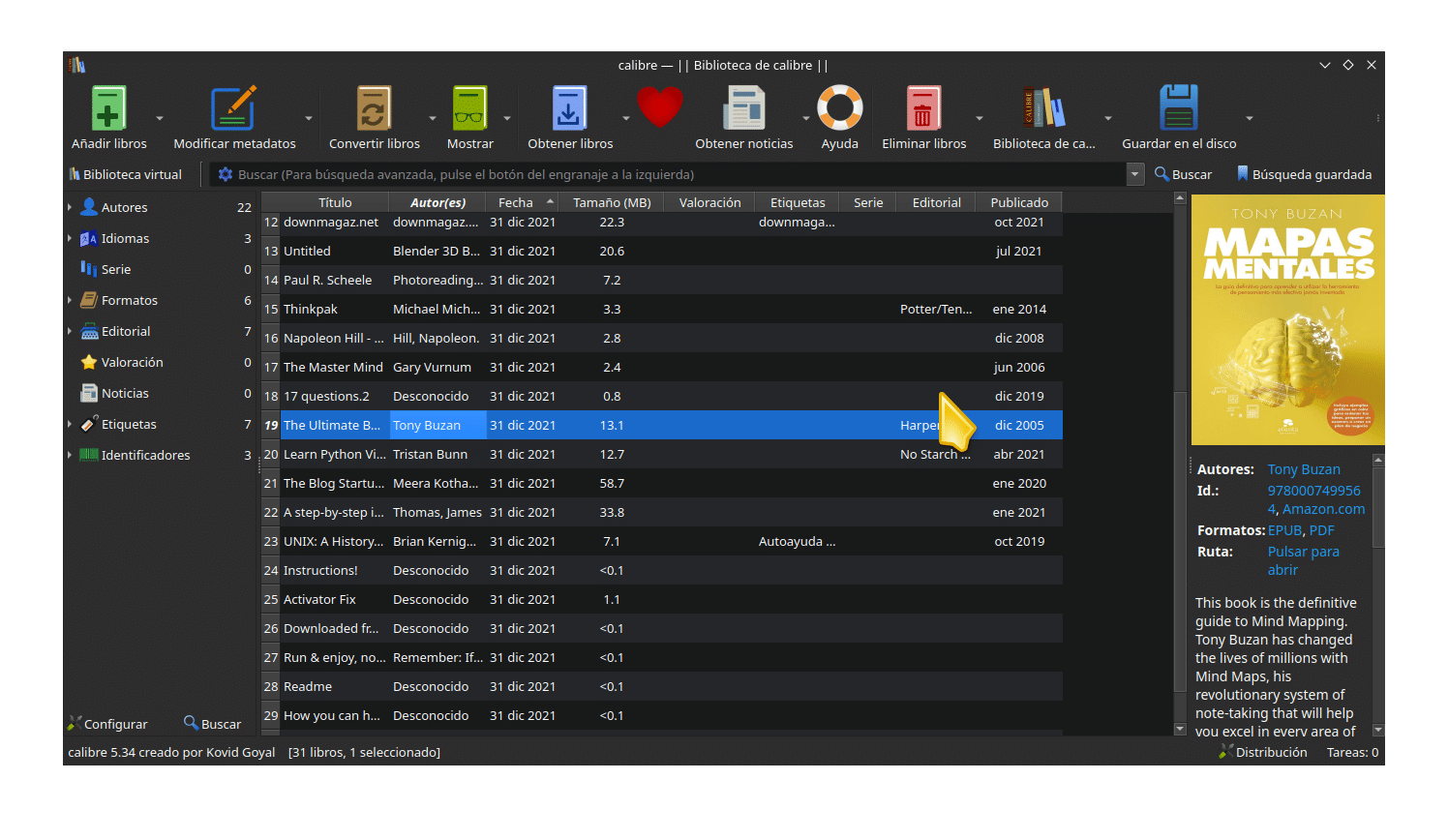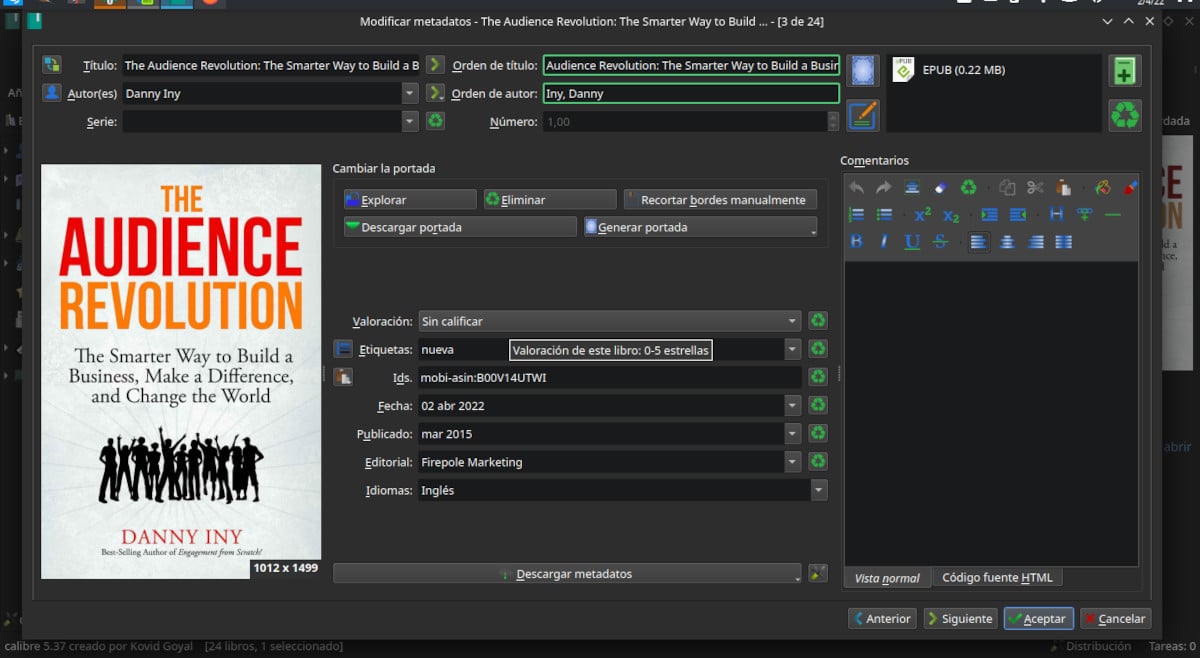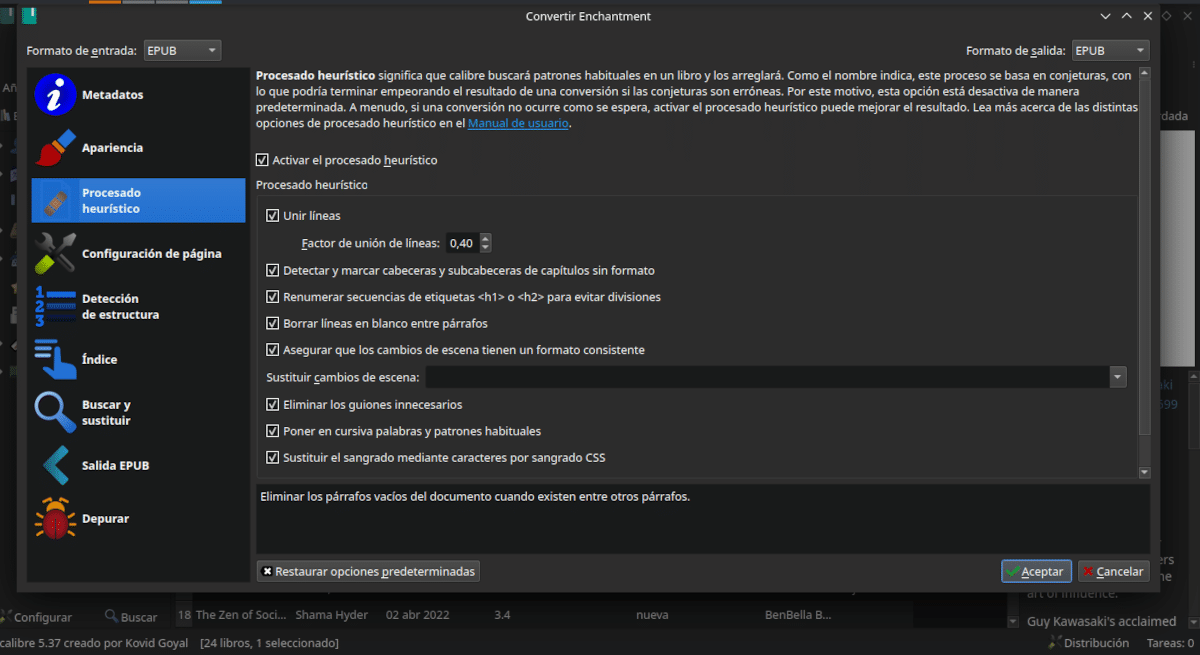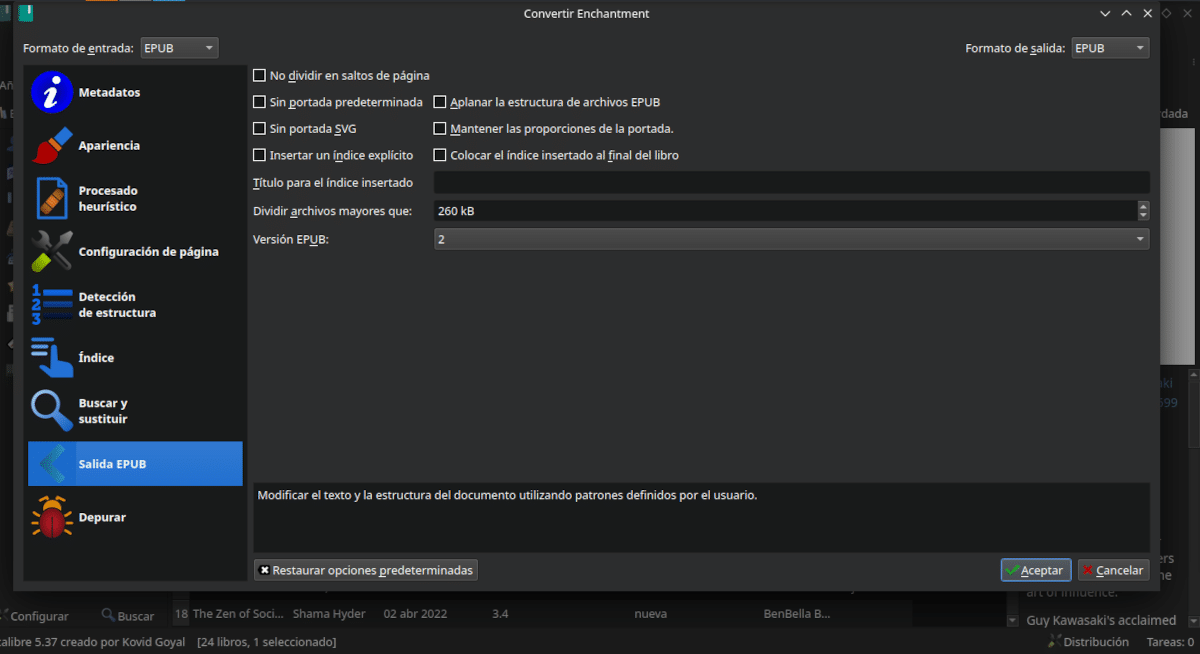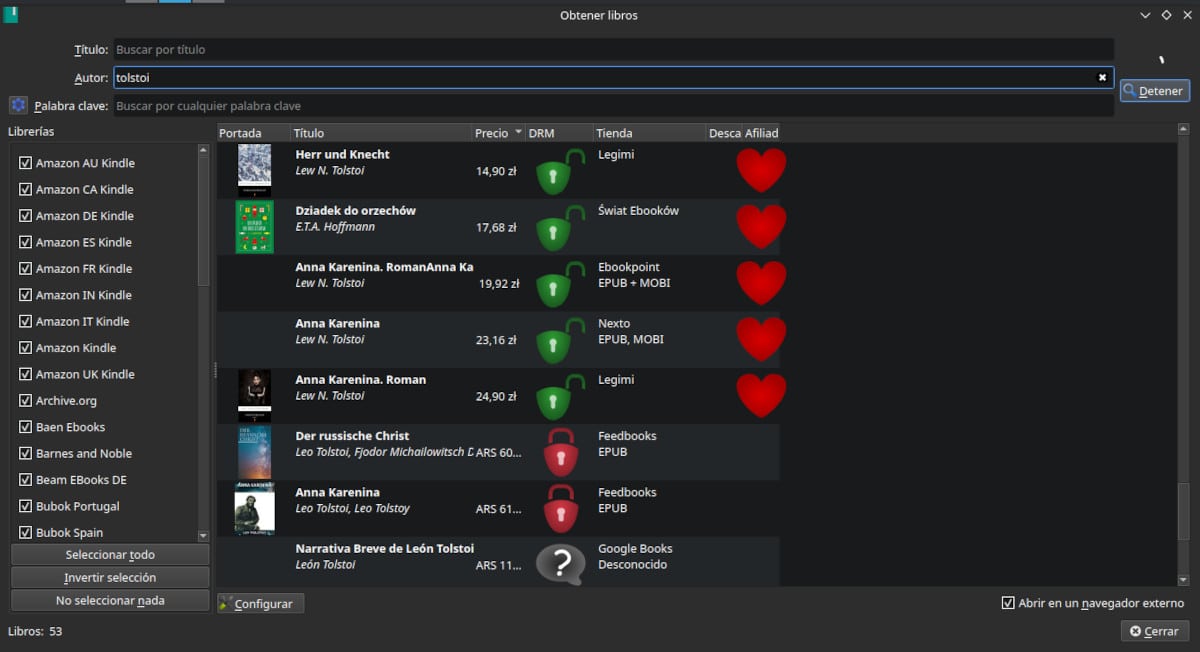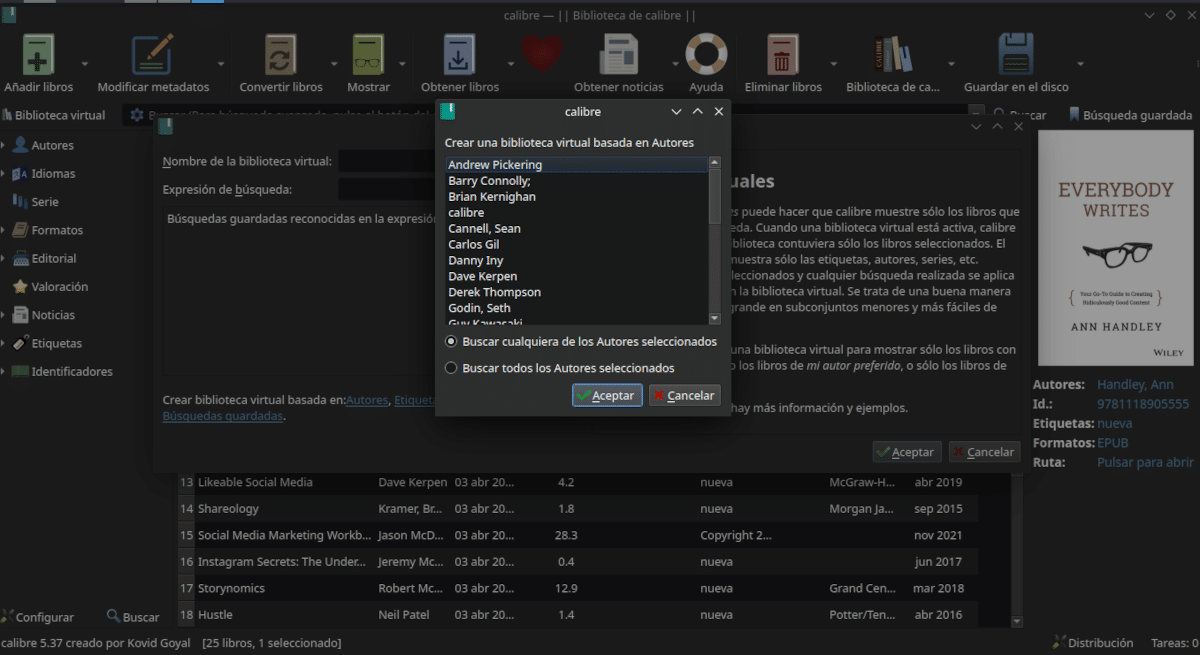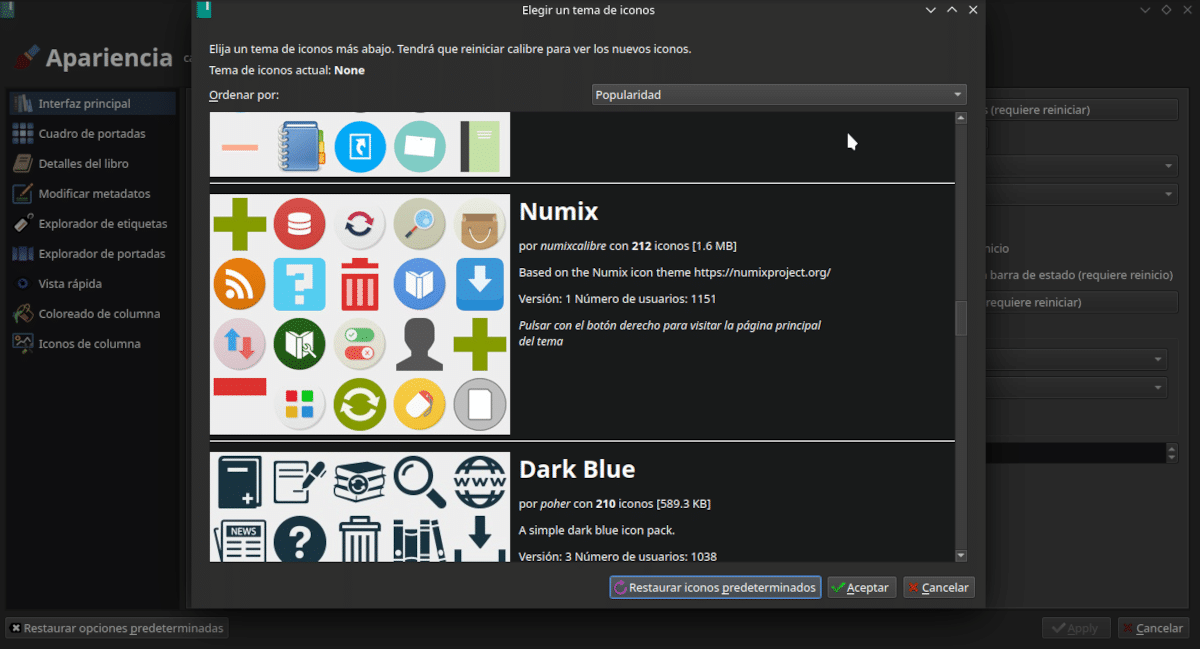
Caliber allows us to configure the different output formats
We are reviewing the different options of use and configuration of Caliber, the open source e-book collection manager. We are doing this because, as with many other projects, the manual is incomplete and disorganized.
It is our turn to comment on two more configuration options and then we will continue with the conversion parameters. As always, the links to previous articles are at the end of the post.
The last two options left to us are to customize the toolbars and menus, and to set the search behaviors.a. In the first case we must select a toolbar or dropdown menu and order the elements by adding or removing them, according to our needs.
searches
Search configuration is done in three panels;
- General.
- Group searches.
- similar bookss.
Dashboard overview
In this panel, by checking or unchecking the corresponding boxes, we can determine that:
- Search results are displayed as we type.
- Choose whether the search results are highlighted in the general list or only the titles that meet the search criteria are shown.
- Show a switch to choose between the options of the previous point without having to enter the configuration.
- Case sensitive searches.
- Distinguish between stressed and unstressed words.
- Set what type of metadata to search by default.
Grouped terms
Grouped search terms are search names that allow you to automatically search more than one column. For example, if we create a police grouped search term with the value series, #black, #classic, then the search police:poirot will search for “poirot” in any of the series, #black, and #classic columns.
To create a grouped search term we must enter the name of the term in the dropdown box and then the list of columns in which to search in the value boxr. To finish, click on the button Save.
The name of the grouped search term is always lowercase
We can use automatic user categories to easily see all the elements that are in the columns contained in the grouped search term. Using the police example above, the automatically generated patron category will contain all series that appear in police, #black, and #classic. With this we can check for duplicates, find which column contains a particular item or even establish a hierarchy of categories (categories containing other categories).
similar books
What we check in this panel tells Caliber how to determine that one book is similar to another when we do this search.
Conversion parameters
Here we determine Caliber's behavior when converting books between formats.
Input parameters
Here we define options for the different formats using a dropdown menu:
- Comic processing: We determine if the processing is allowed, if the images can be converted to black and white, how many colors can be used, if the proportions are maintained, the direction is changed or the images are blemished.
- FB2: Here the only option is to decide whether or not to include an index at the beginning of the book.
- PDF: We indicate whether or not to ignore the images.
- RTF: The same with images in the native Windows format.
- TXT: We can have Caliber try to recognize text structure, preserve spaces, remove indentation, and interpret Markdown notation.
- DOCX: We decide whether to consider one of the images in the document as a cover page, whether to add a page break after each endnote, and prevent indexes and subscripts from affecting line spacing.
Common parameters to input and output
We cover this topic in a previous article
Output parameters
Epub
The following options can be determined:
- Split or not on page breaks.
- Assign or not cover.
- Insert a table of contents and give it a title.
- Estimate criteria for dividing into pages
- Choose the EPUB version
DOCX
For conversion to Microsoft Word format we determine.
- Page size.
- margins.
- Add or not index.
- Insert or not cover and in case of doing it if we maintain the proportions.
In the next article we continue with the configuration of the output formats
Previous Articles
